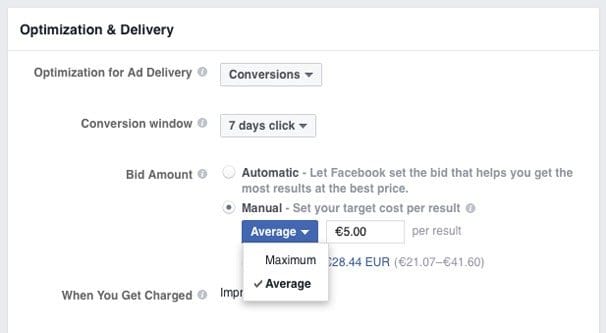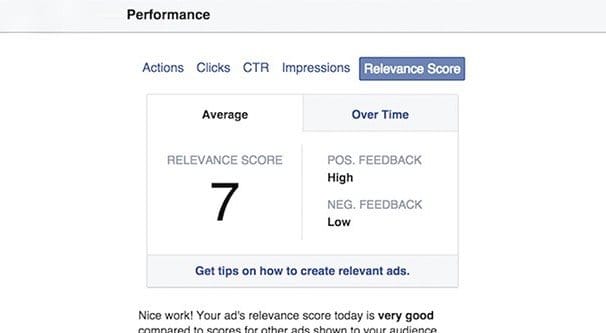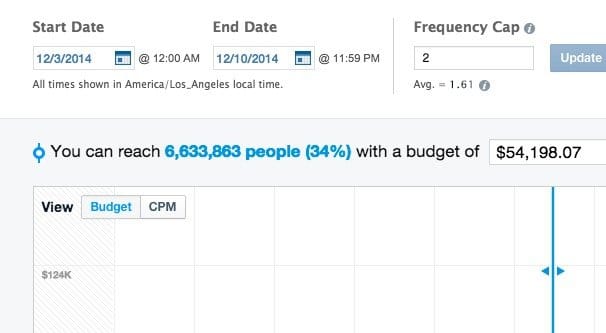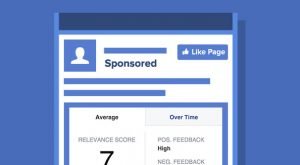 Written by ContentPowered.com
Written by ContentPowered.com
Here on this site we’ve talked a lot about Facebook ads. We’ve told you why they’re excellent to use, how to hack them to make them cheaper, and how to split test them for maximum value.
Sometimes, when you’re running a Facebook campaign, you suddenly see a jump in the prices you have to pay. There are a lot of possible reasons why your costs can jump up, so let’s talk about the five most common of them.
1: Your Maximum Bid is Too High
Facebook ad slots are distributed via an automatic auction process. If you and Brand A both are bidding on an ad slot for Steve Everyman, Facebook will check how much each of you has added as your maximum bid. If Brand A bids $1.05 and your maximum bid is $2.00, you will win the auction. Typically, Facebook will only charge you enough to win the bid, so rather than paying $2 for the ad slot, you pay $1.06.
This is a gross oversimplification of the process as a whole. There are factors beyond the maximum bid you set that go into who wins the auction. If you have a maximum bid of $2.00, and Brand A has a maximum bid of $10.00, you can still win the bid. In order to actually win the bid, though, Brand A needs to have incredibly terrible ads that have a very low estimated action rate, low relevance, and low quality scores. Consider each of these something like a multiplier. The worse the ad is, the more Brand A would have to bid to get a slot, if they’re even able to get one at all.
Your maximum bid is not your budget. Your budget is the total amount of money you’re willing to spend in a given period. Your bid is the maximum amount of money you’re willing to spend on a single conversion – or a single view, if you’re running CPM ads – and determines roughly how many conversions you can get within your budget.
When you create an ad, you can set automatic bidding. With automatic bidding, Facebook will analyze your situation and your audience to determine what the ideal mid-range bid will be in order to get a reasonable amount of conversions within your budget. They won’t dump your entire budget on a few individual conversions, but they also will not keep your bid so low that you get nothing.
The side effect of this is that, as other factors come and go, the “ideal” bid can jump up dramatically. If you have automatic bidding turned on and these factors change, you can see your cost per conversion jump up literally overnight.
There are ways you can counteract this process, but the easiest is to simply change to manual bidding and set a maximum bid that you find reasonable. The only downside to this process is that, if competition has risen too much, you will lose out in the auctions and won’t be displayed.
2: Your Relevance Score Dropped
Facebook doesn’t like when people spam out ads to as many people as possible when those ads aren’t relevant to the interests of the people involved. They strive to show the most interesting, relevant ads to everyone, so that those people are more likely to click through. It results in higher conversion rates, which means more people making money, which means Facebook makes more money.
One of the metrics they added relatively recently is a relevance score. Relevance scores are calculated based on feedback and actions users take with regards to the ads you run. Positive indicators can include video views, link clicks, conversions, and other intended actions. Negative actions include ignoring the ad and reporting it as spam or irrelevant. The score is a number between 1 and 10, with 10 being the best.
The higher your relevance score is, the more preferential treatment you get in the ad auction. If you and Brand A both have a maximum bid of $2.00 for the same audience, Facebook will award the ad slot to the one with the highest relevance score.
So how can you improve your relevance scores, so you get better treatment and more preference in the future?
- Make sure your ads are targeting a smaller, more relevant audience. You need to know who your audience is and create content that is tailored to them. One large ad with a broad audience is unlikely to be highly relevant to all of them, and will get a lower score. Three ads for the same product, targeting sub-sections of that audience with different specific content, will have better relevance scores.
- Split test your advertising to optimize ads for your audiences, or audiences for your ads. Iteration helps you improve, and while you might end up with a few lower quality ads, on average your relevance score will go up.
- Focus on high quality imagery and copy. The less relevant your content is to your landing page and to the people you’re targeting, the worse off you’ll be.
In essence, you’re just keeping standard advertising best practices in mind as you create and iterate your ads. It can be a slow process to improve over time, but as long as you ARE improving, you’re going to come out ahead.
3: You’re Violating the Text Rule
For years, Facebook has had a “20% text” rule for their advertising. The idea was that if your ad contained an image that was over 20% text, it was less likely to be clicked by users and it was going to be less effective. Rather than allow it and let marketers waste time and money, Facebook simply rejected those ads.
The problem with this was monumental. First of all, they identified 20% text density by using a simple grid overlay tool that was very imprecise. A simple repositioning of text could mean the difference between 10% and 30%. Secondly, enforcement was very sporadic. Sometimes an ad would be rejected, while other times it would slip through with well over 20% of its image as text. It was inconsistent and, because of that, extremely frustrating to deal with. You can read a good breakdown of the flaws with the old rule written by Jon Loomer here.
Facebook heard our cries, however, and changed up the rule. It’s no longer governed by a grid tool, nor is it an automatic rejection when you include too much text. However, text is still important to your ads!
What Facebook does now is implements a sliding scale for text density in your images. The more text you have in your image, the worse it will be. They categorize images into four categories: High text, Medium text, Low text, and OK text. OK generally means little or no text, typically just a small logo. High text is an image covered in text. You can see examples from Facebook in this image:
The “worse” your image is with text, the worse it is ranked in ad bidding. Think of it like an image-based implementation of relevance score. An ad with high text might not be shown at all. An ad with too much text will be shown, but costs for showing it will be driven upwards. It all ties in with relevance score, in a way.
If you want to improve the performance of your ads while reducing their cost, one sure-fire way to do it is to reduce or eliminate the text on the image. I understand that sometimes you need some text, whether it’s a logo or a small headline or sale name for branding purposes, and that’s fine. Just strive to keep your text to a minimum. The more text you add, the worse off you’re going to be.
4: Your Audience has Stiff Competition
One common misconception with Facebook ads is that competition for an audience is just between you and your industry competition. Coke might be competing with Pepsi, and Jones Soda Co., and Faygo, and the Snapple Group.
This might be true if the ad slots you were bidding on were on an industry website. If some website that only reviews soft drinks had ad slots, those companies might compete to bid for those slots, and that’s it.
With Facebook, the ad slots are for an audience with a broad and varied set of interests. Steve Everyman might be interested in sodas, and sandwiches, and candles, and video games, and PC equipment, and puzzles, and live music. Everyone in every one of those industries is competing for those ad slots, as well as people in other industries who are targeting audiences that happen to have Steve in them.
This means you’re actually competing with a huge number of different businesses. It’s also why your ad targeting needs to be on point. The larger and more broad your audience is, the more other companies are competing for it. When you have smaller, more focused audiences, fewer brands are competing for it and you have a higher chance of being relevant.
Some audiences will cost more than mothers. However, you don’t always want to aim for the cheaper audiences. They might be cheap because they convert at a very low rate. You can abuse targeting to end up with one-penny clicks to your website, but you’re likely to end up with zero conversions from that audience. Your ROI ends up negative with no possibility of turning a profit.
Your goal is to target an audience that you know is going to convert, and then use split testing and ad optimization techniques to improve your ads such that they get more conversions per audience. That audience might cost a bit more than your “average” CPC, but the profits will be worth it.
Focusing entirely on the cost of your conversions is not a great way to deal with advertising. What you actually need to do is consider the profits you get from each conversion, balanced with the cost of those conversions, balanced with the volume of those conversions. You could find an excellent audience that converts at a 100% rate, but if that audience only has 10 people in it, you can’t scale that up. You can find an audience with a very low conversion rate – and thus very low costs – but a single conversion could be 1,000% of your investment in returns. These are extremes, and the reality will always be somewhere in the middle.
5: Your Frequency has Peaked
Ad frequency is another metric you need to keep in mind as you’re running your ads. Frequency is the number of times your ad is shown to a single person in your audience. If you have an audience of 100 people, and 50 of them see your ad, your frequency is .5. If everyone in your audience sees your ad twice, that’s a frequency of 2.
Data shows that in general people will click on ads most either the first or second time they see them. By the third time around, people are starting to get tired of the ad, and if they see it more than that, they’re more likely to hide the ad or click to stop seeing ads from your company. Both of those are actions that will drop your relevance score.
The higher your frequency, the more negative impact it will have, and the more your costs will rise. If an ad has reached a frequency greater than 3 or so, you’re going to be wasting money by keeping it running. Ideally, you will simply change up or get rid of the ad and start running a new one at that point, or even before.
For long-running ads for ongoing campaigns, it can be easy to let it slip and forget about it. That’s how huge frequencies happen, and the resulting hit in your quality score can be extremely detrimental to your CPC. You want to avoid this, so keep a close eye on your frequency on your ads. I recommend checking on it at least twice a week, though you can obviously adapt that to how quickly or slowly the frequency rises.





